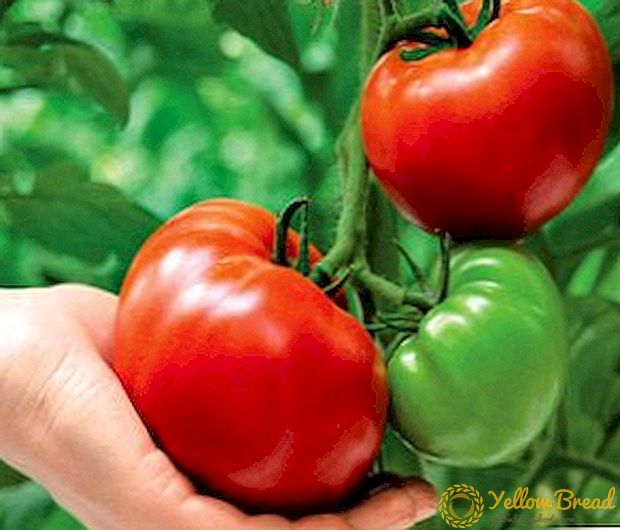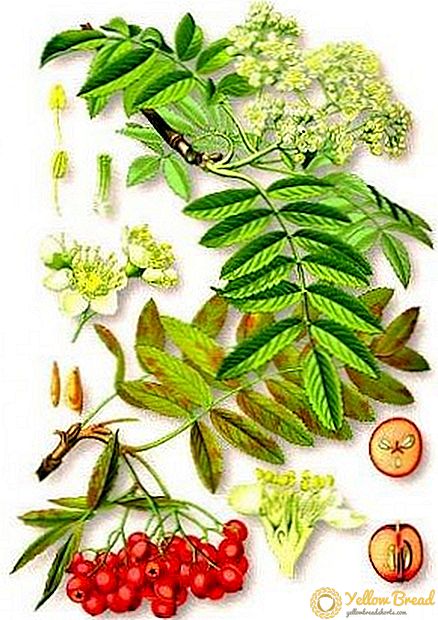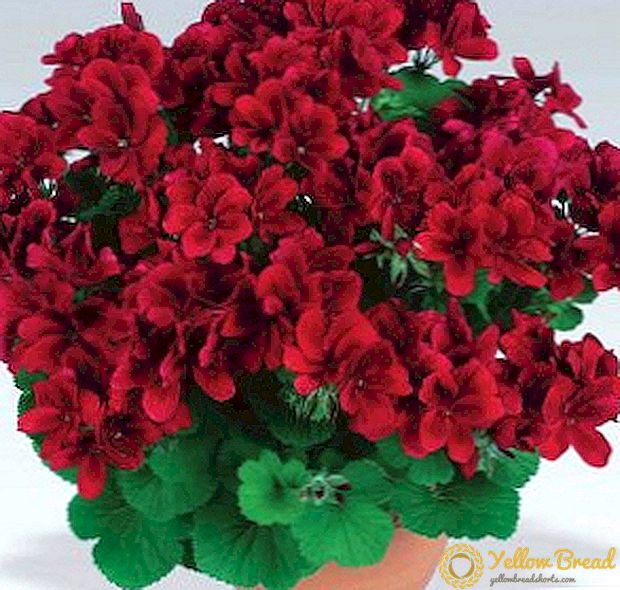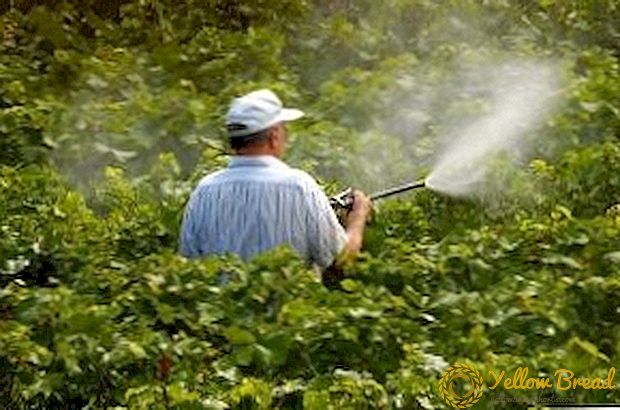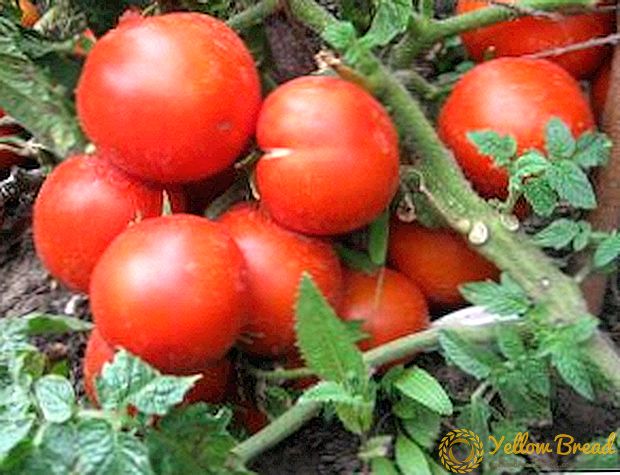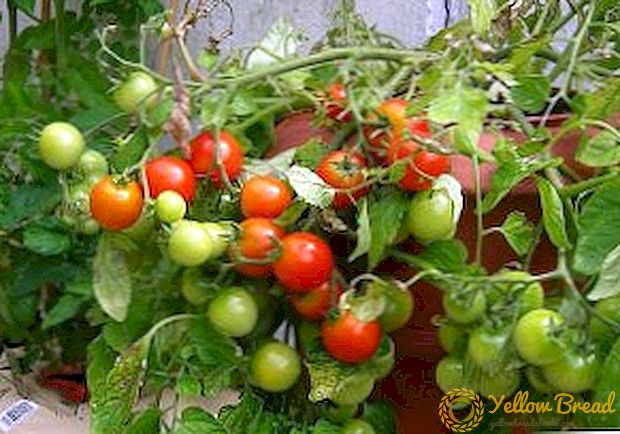 Of the many varieties of tomatoes offered to gardeners, the Katyusha F1 variety stands out for such a remarkable characteristic as resistance to adverse weather conditions. However, this is not its only advantage. With the description of the other features of this variety, we now take a look.
Of the many varieties of tomatoes offered to gardeners, the Katyusha F1 variety stands out for such a remarkable characteristic as resistance to adverse weather conditions. However, this is not its only advantage. With the description of the other features of this variety, we now take a look.
- Description and history of breeding
- Bushes
- Fruit
- Characteristic variety
- Advantages and disadvantages
- Landing features
- How to care for a grade
- Diseases and pests
Description and history of breeding
"Katyusha F1" refers to the hybrids of the first generation. The variety was included in the register of the state security commission of Russia in 2007. The authors of the variety are Borisov A.V., Skachko V.A., Stocked V.M., Zhemchugov D.V .; the originator is the Manul breeding and seed company registered in the Moscow region.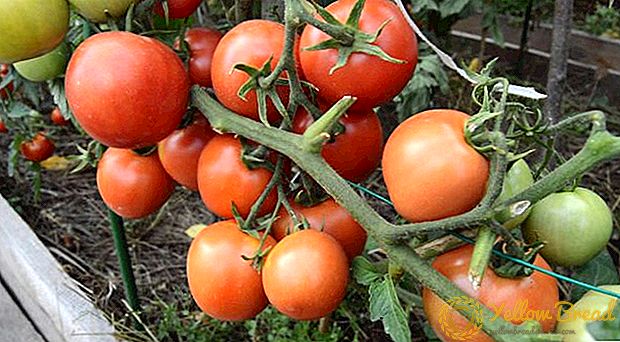
Bushes
The plant of this hybrid is determinant, that is, having a limited growth. The bush is short, grows to about 80 cm, but in greenhouses it can grow up to 1.3 meters in height. Grown in one stem. The leaves of the bush are green in color and medium in size.
Fruit
Ploskookrugly smooth fruit different red color. Its weight is on average in the range of 90-180 g, but it can reach more than 300 g. The taste of the fruit is characterized as good and even excellent. It contains 4.8% dry matter and 2.9% sugar.
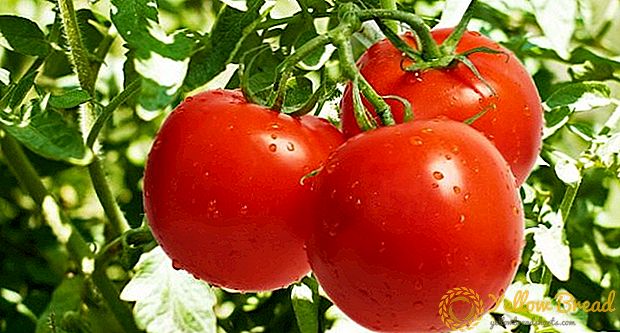
Characteristic variety
Variety "Katyusha F1" is mid-season. According to the registry of the Federal State Budgetary Institution "State Port Commission", it is approved for cultivation in the Central Chernozem and Far Eastern regions of the Russian Federation. It is allowed to grow in open ground and in greenhouses. This hybrid is resistant to heat and drought, but at the same time it tolerates overwetting. Productivity, depending on weather conditions, ranges from 160-530 kg / ha. At the same time, the output of commercial fruits is from 65% to 87%. Gardeners are harvested from one square meter to 10 kg of tomatoes "Katyusha F1" when growing them in open ground. In the greenhouse, you can collect up to 16 kg of fruit from 1 square. m. Transportability and keeping quality of fruits is good. They are best suited for fresh use and for squeezing juice.But use these tomatoes and for various types of preservation.
Advantages and disadvantages
Hybrid "Katyusha F1" is not deprived of advantages. In particular, these are:
- resistance to both hot and rainy weather;
- good taste of the fruit;
- the absence of a green, underexposed area near the stem;
- good transportability and keeping quality;
- resistance to diseases and pests.
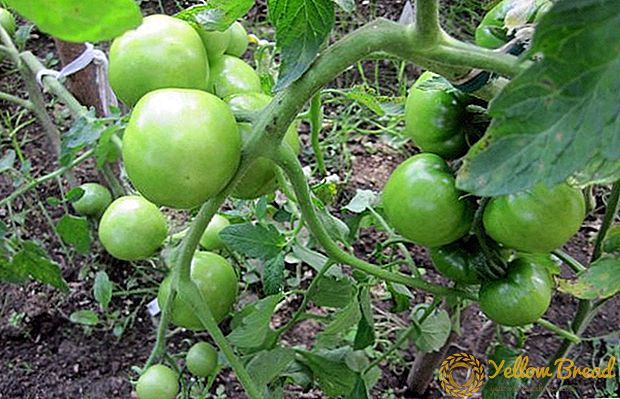 There are no pronounced defects in this hybrid. It is not as good as some other hybrids, but it is more than redeemed by its positive qualities.
There are no pronounced defects in this hybrid. It is not as good as some other hybrids, but it is more than redeemed by its positive qualities.Landing features
About two months before planting in open ground, tomato seeds are planted in a container to obtain seedlings. Depth of landing - no more than 5 mm. When sprouts form two leaves, sprouts dive. In open ground, seedlings are planted after the threat of frost has passed. It is recommended to plant 4 bushes per square meter according to the scheme 50x50 or 70x30.
How to care for a grade
Caring for "Katyusha F1" is not difficult. The variety needs infrequent but abundant watering. It is necessary to periodically destroy weeds, loosen the soil around the bushes and carry out feeding. As a top dressing use both mineral fertilizers, and organic. The first dressing is made one week after transplanting. In ten liters of water stir 0.5 liters of cow dung and one tablespoon of nitrophoska. On one bush will need about 1 liter of this solution.
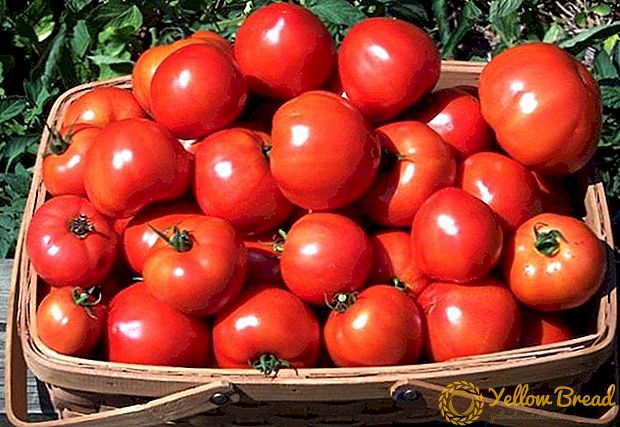 When the second flower brush of a tomato is dissolved, the time of the second feeding comes. For her, prepare a solution according to the following recipe: 0.5 liters of chicken manure, a tablespoon of superphosphate and a teaspoon of potassium sulfate are dissolved in 10 liters of water. Use half a liter of the resulting liquid on one tomato bush. In the period when the third flower brush is formed, the tomatoes are fed with a solution that is prepared from the calculation: a tablespoon of potassium humate and nitrophoska per ten liters of water. The consumption rate is five liters of mixture per square meter of landing.
When the second flower brush of a tomato is dissolved, the time of the second feeding comes. For her, prepare a solution according to the following recipe: 0.5 liters of chicken manure, a tablespoon of superphosphate and a teaspoon of potassium sulfate are dissolved in 10 liters of water. Use half a liter of the resulting liquid on one tomato bush. In the period when the third flower brush is formed, the tomatoes are fed with a solution that is prepared from the calculation: a tablespoon of potassium humate and nitrophoska per ten liters of water. The consumption rate is five liters of mixture per square meter of landing.
Diseases and pests
Like all hybrids, "Katyusha F1" is resistant to diseases affecting tomatoes; in particular, such as the tobacco mosaic virus, cladosporiosis, fusarium. But in order to reduce the risk of diseases, it is still recommended to take preventive measures - spray the bushes with appropriate preparations. This variety can also be attacked by pests, for example, cedar beetles, wireworms, Colorado potato beetle, aphids, etc. Insecticides and various biologics are used to control them.
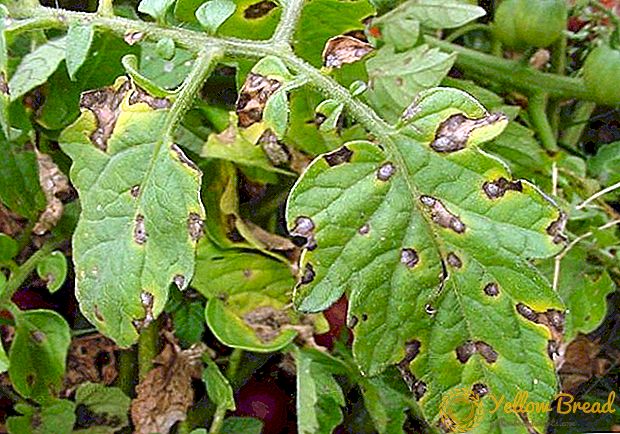 From some pests helps planting certain plants around the perimeter of the site with tomatoes. For example, it is believed that the marigolds deter Medvedka, and calendula helps to get rid of scoops. Summing up, it can be noted that "Katyusha F1" is very convenient for growing variety. It resists well to the vagaries of the weather, does not require complex care, is resistant to diseases, and its fruits taste good.
From some pests helps planting certain plants around the perimeter of the site with tomatoes. For example, it is believed that the marigolds deter Medvedka, and calendula helps to get rid of scoops. Summing up, it can be noted that "Katyusha F1" is very convenient for growing variety. It resists well to the vagaries of the weather, does not require complex care, is resistant to diseases, and its fruits taste good.

